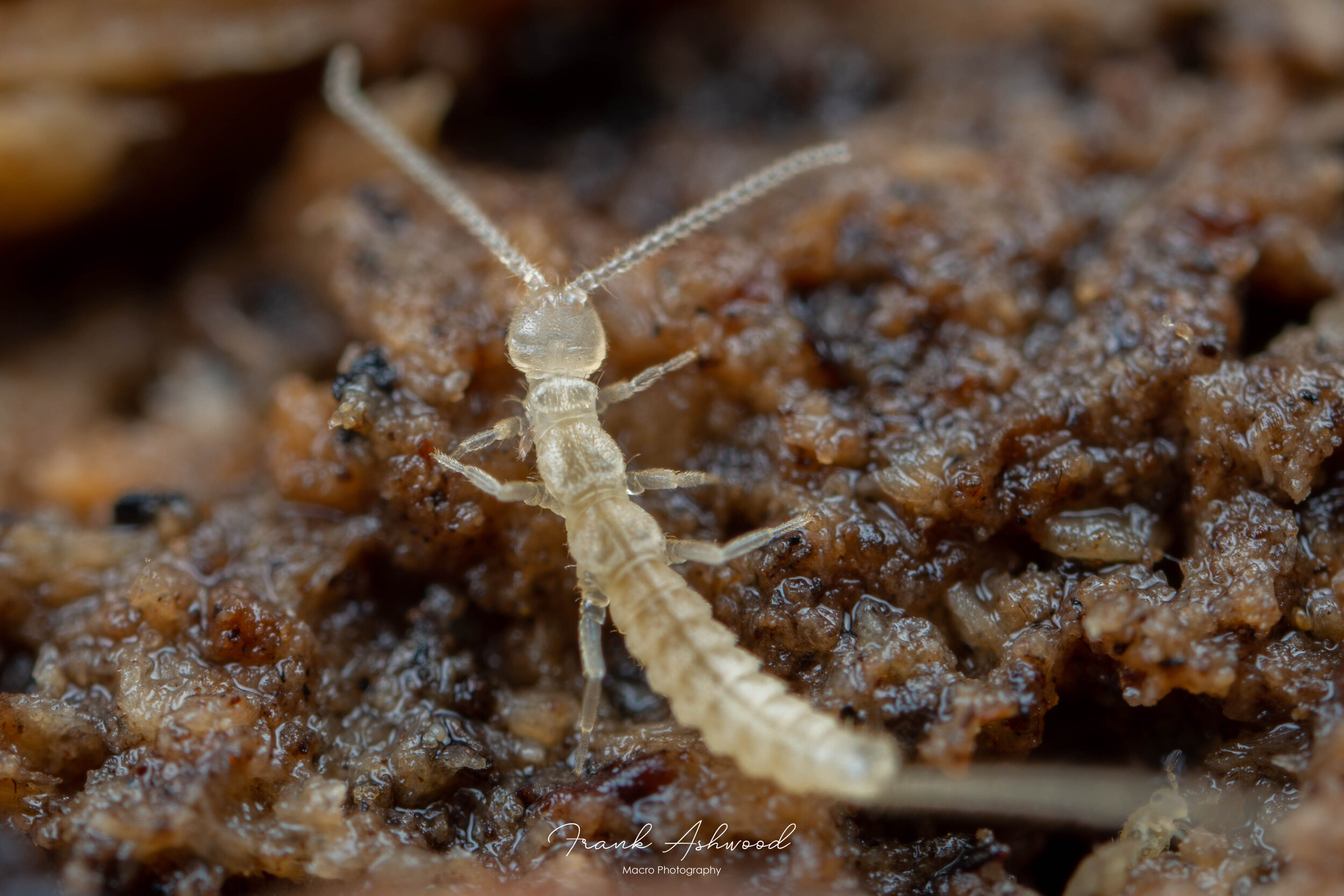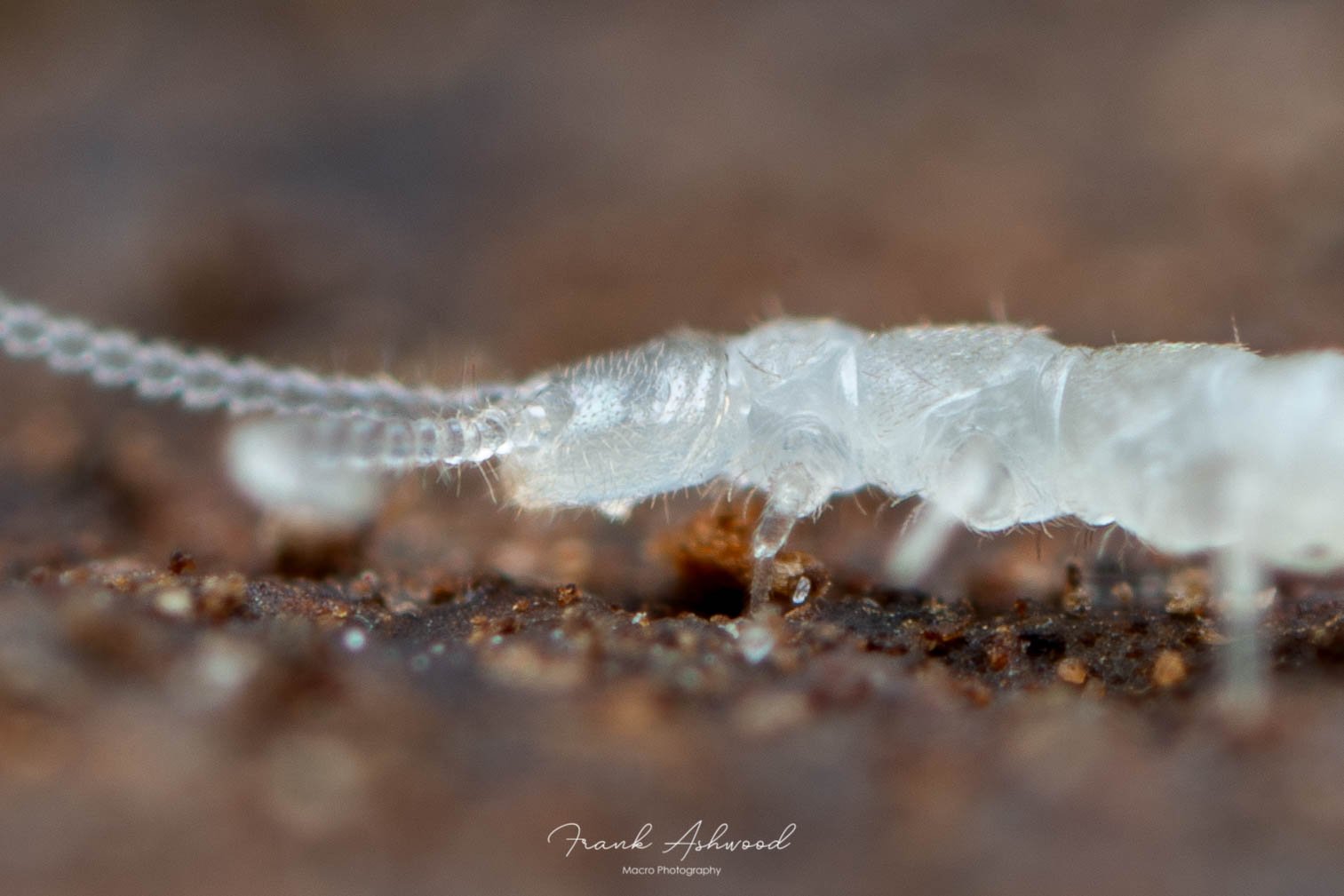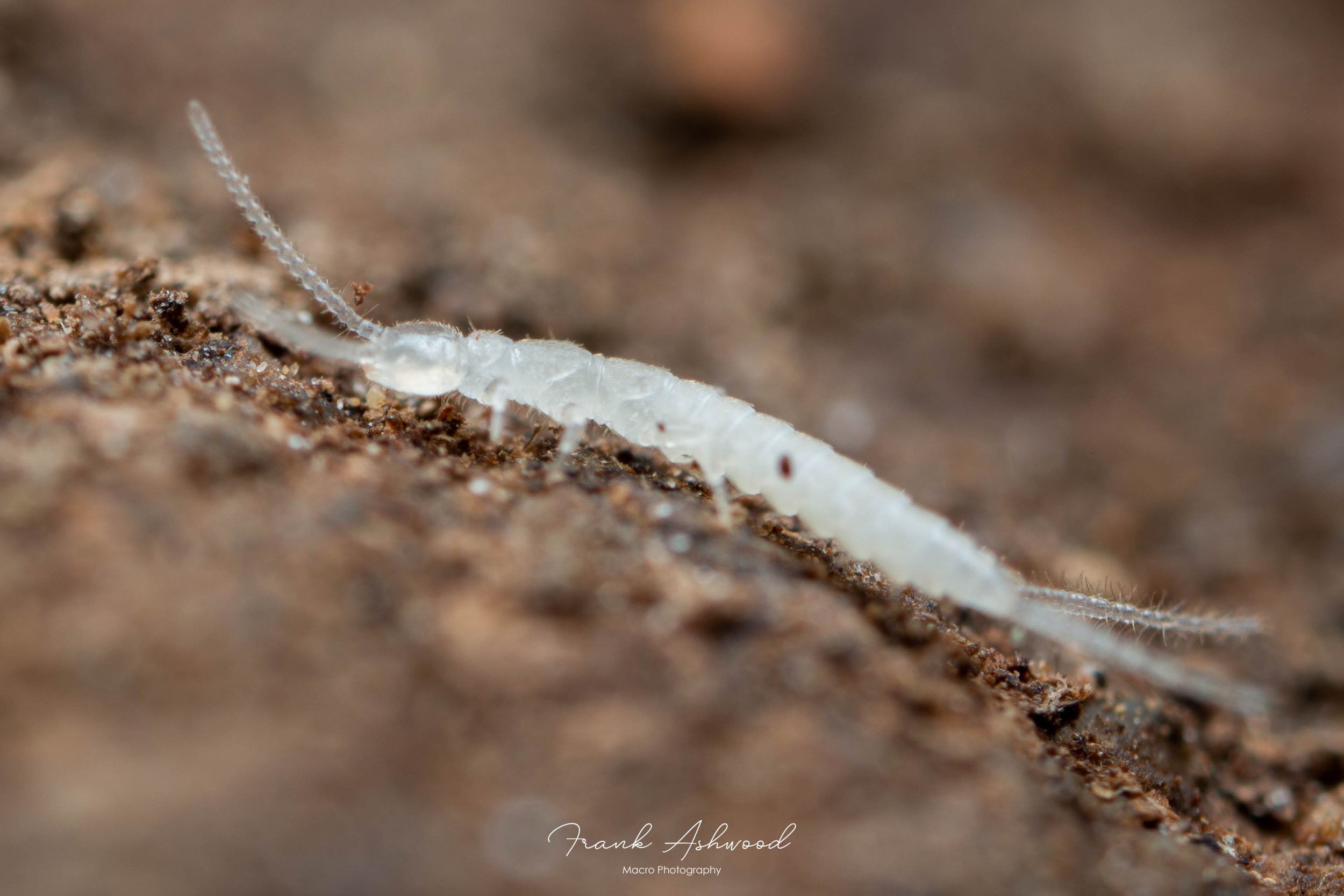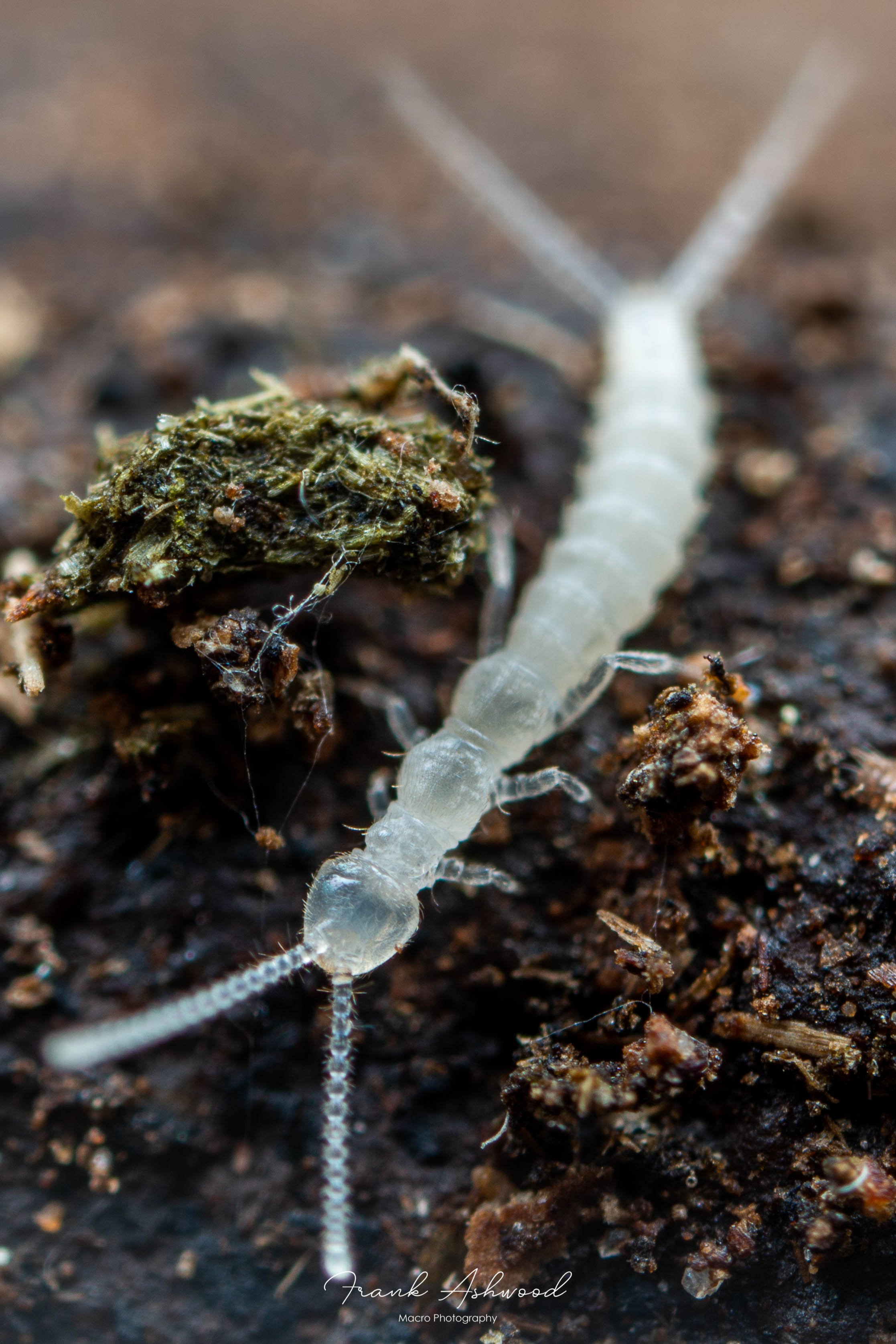Diplura
Arthropoda -> Hexapoda -> Entognatha -> Diplura
These endearing creatures are commonly known as ‘two-pronged bristletails’, owing to their two unique tail appendages (called ‘cerci’). In fact, their scientific name ‘Diplura’ also refers to their twin cerci - stemming from the Greek words diplo “double” and ura “tail”. Taxonomically, the Diplura currently sit alongside springtails (Collembola) and Protura within the class Entognatha (wingless, ametabolous and with retracted mouthparts - unlike insects), although their placement has changed before and may change again, as all three orders are quite different to each other, and may not actually share a common ancestor... it’s all a bit unknown. What IS known, however, is that the shape of the two cerci are hugely variable between the different families of Diplura. In the family Japygidae, the two cerci have evolved into robust pincers, much like those of earwigs, and are used to grasp their small invertebrate prey. I’ve never seen them, because I haven’t travelled outside the UK to look for them yet, however Andy Murray has some excellent images of them on his website here. Instead, I just keep doing my best to photograph the UK’s filamentous-tailed Campodeidae species (of which 12 are known so far), which is no small feat; due to their multi-axial body plans and rapid speed, they are among the hardest of the soil fauna to photograph well!
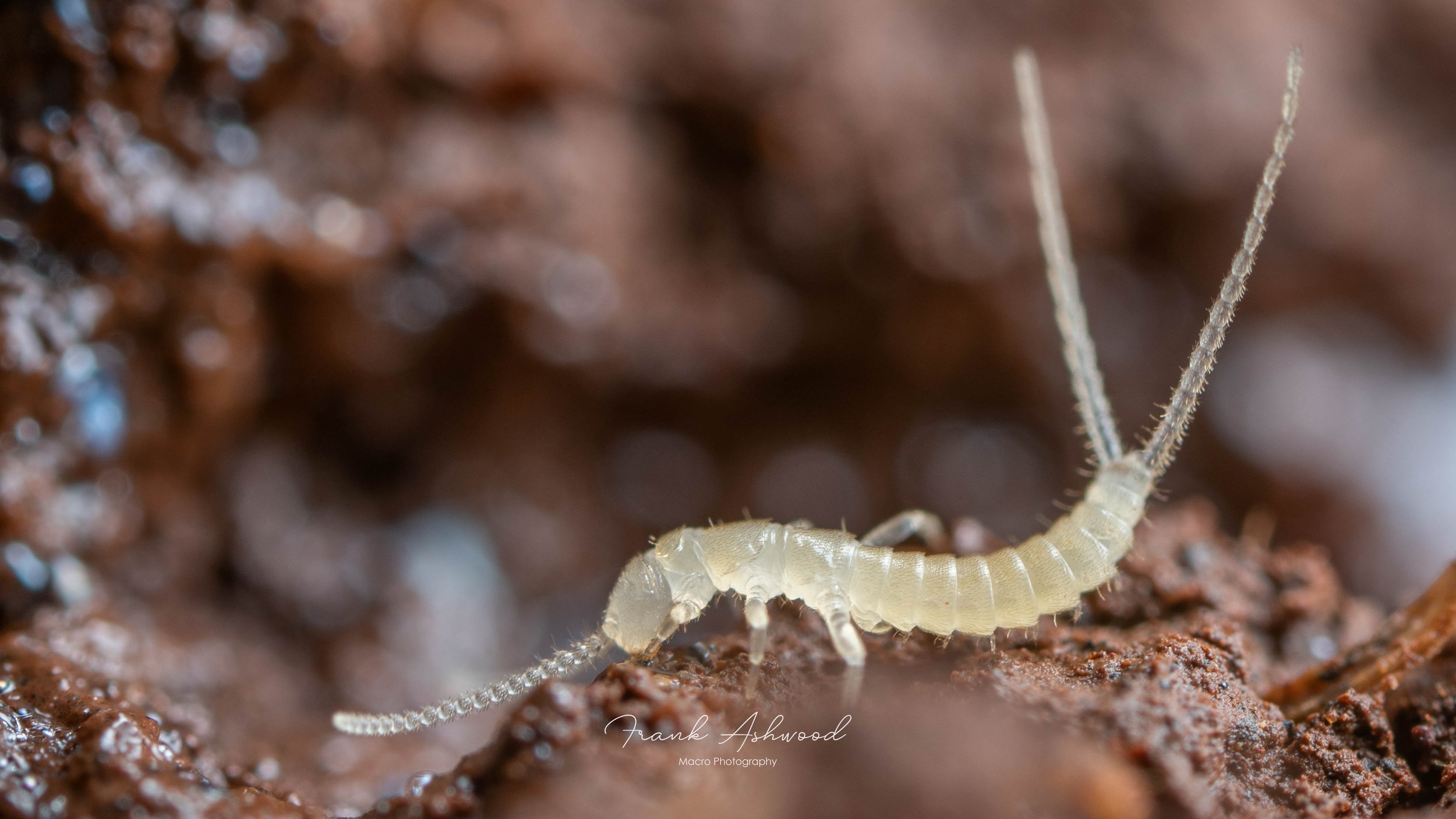
Campodeidae sp.
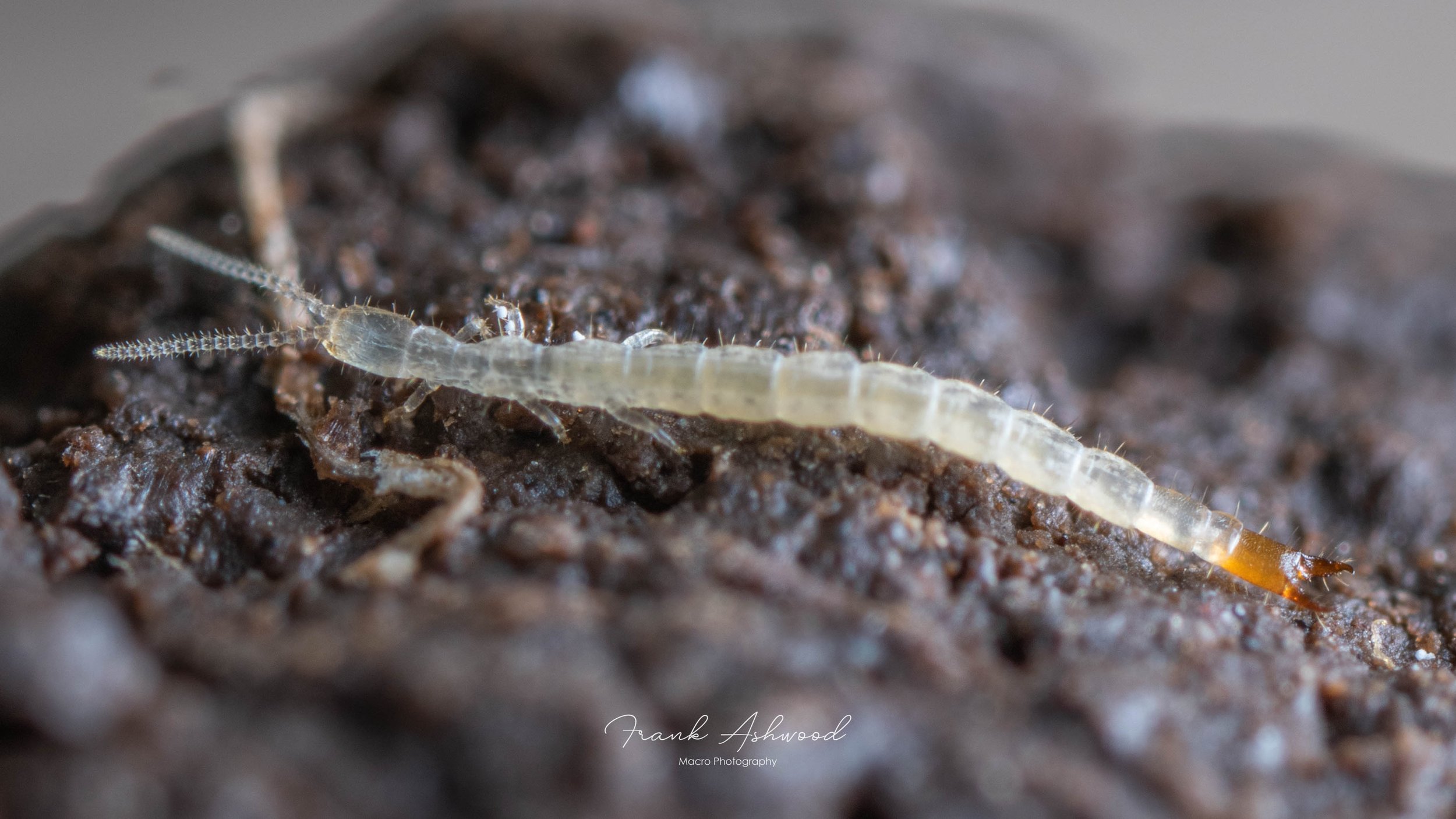
Japygidae sp.
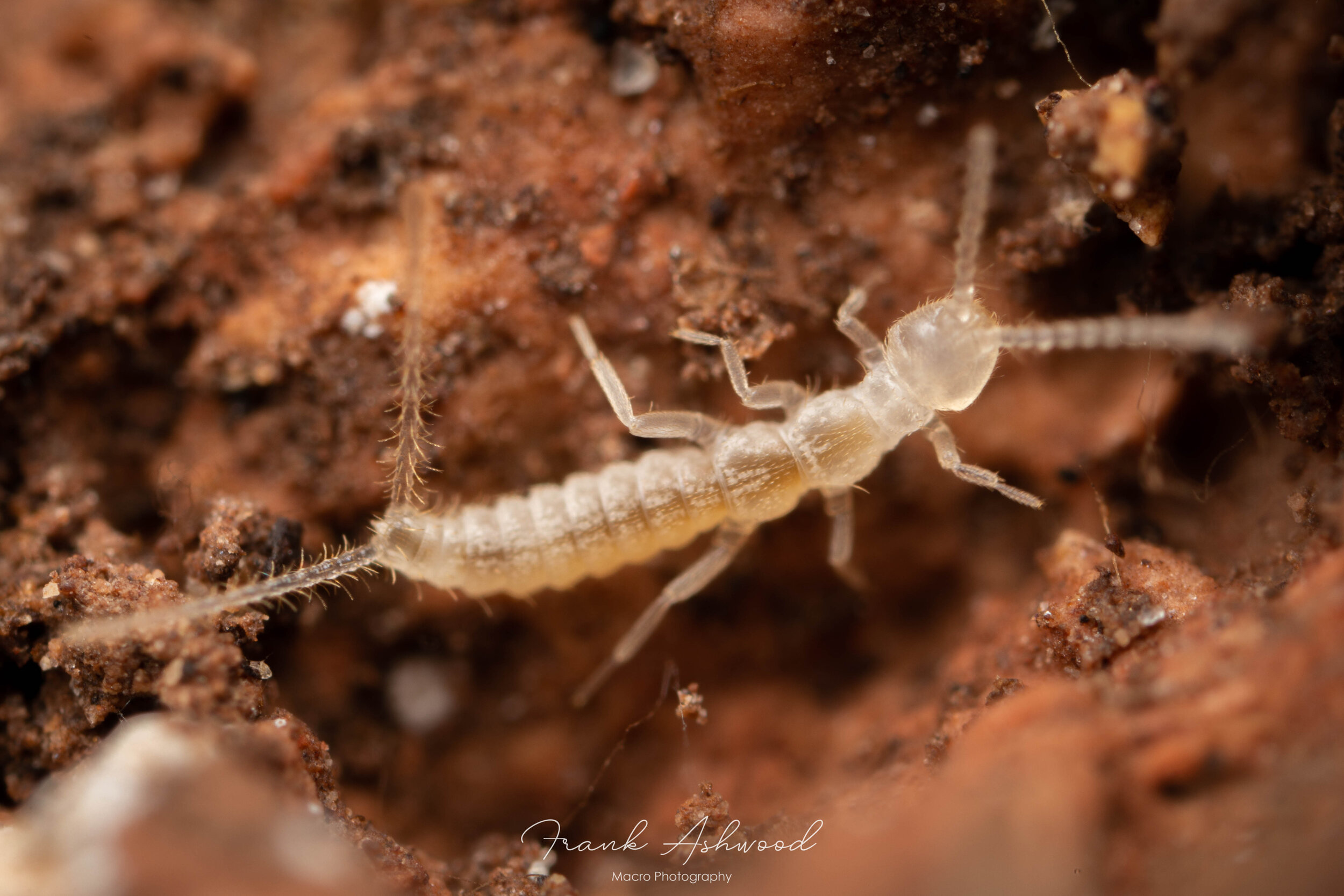
Campodeidae sp.
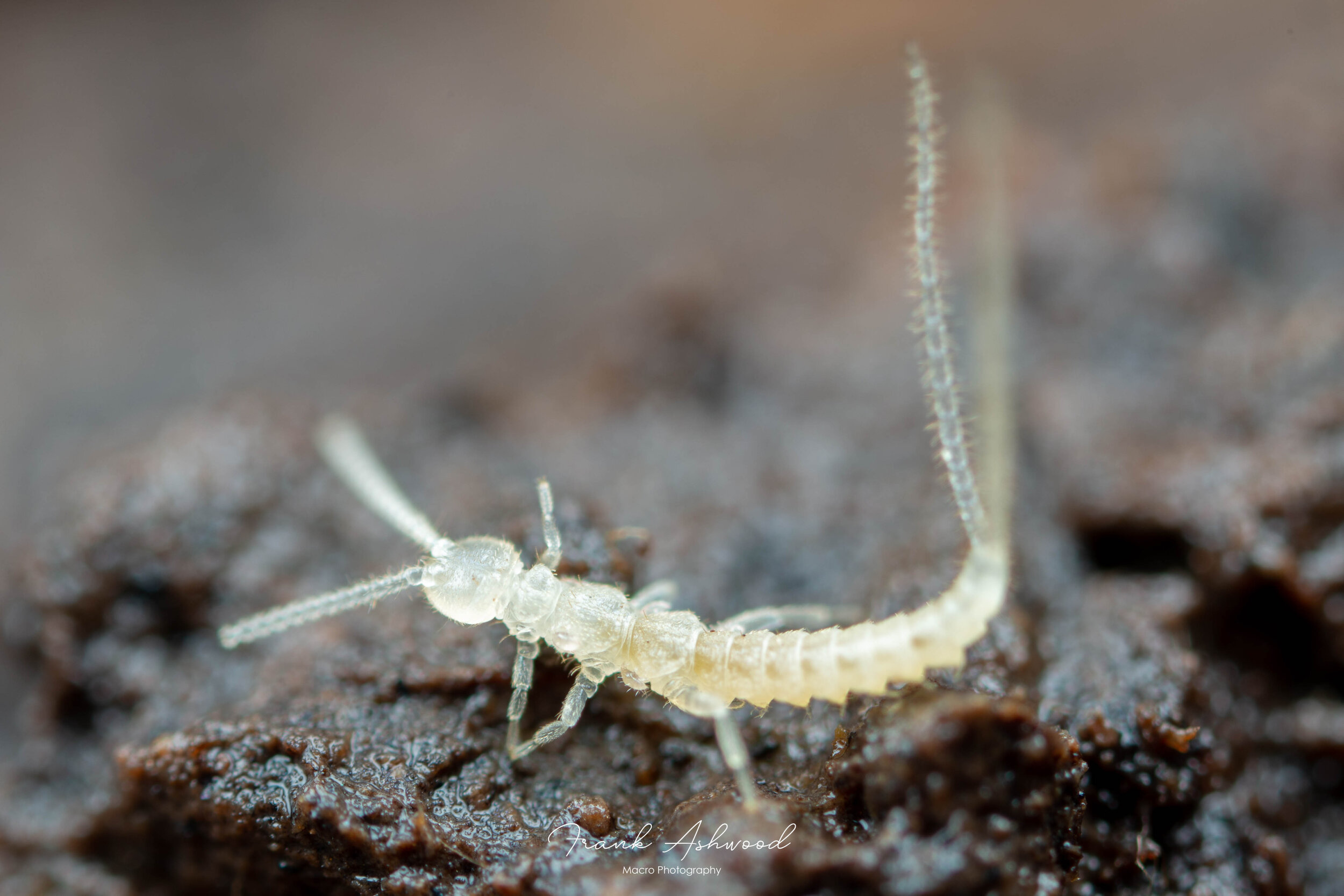
Campodeidae sp.
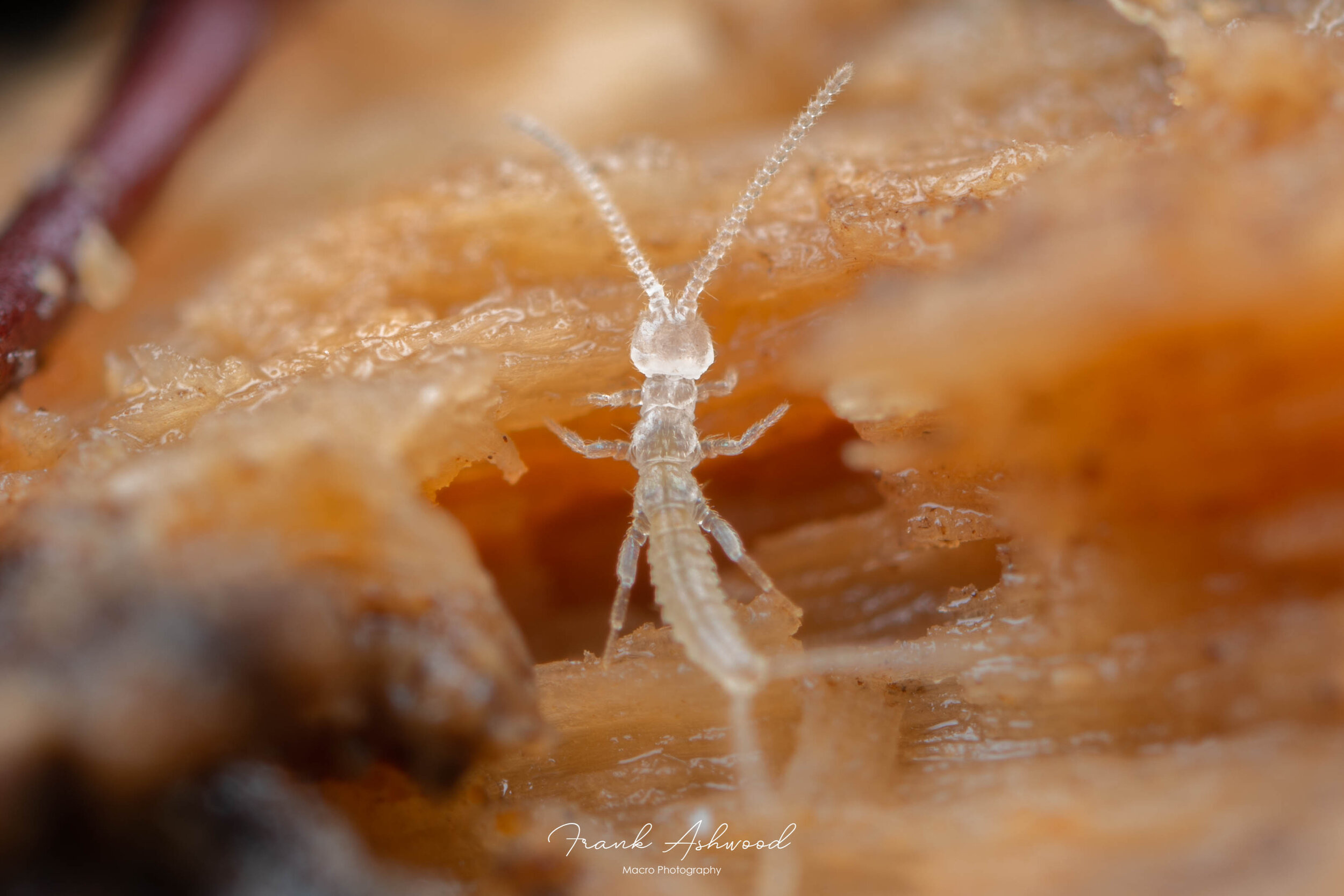
Campodeidae sp. juvenile
